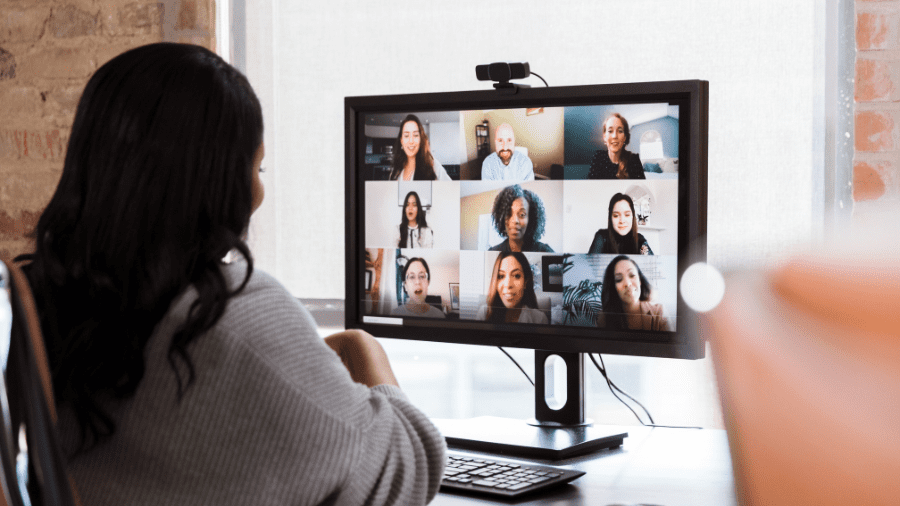Looking to Ramp Up Your Demand Generation? Virtual Events May Be Just the Solution
Growth-minded companies recognize that if you want to increase revenue, you need to bring in more leads. And if you want to bring in more leads, you need to generate greater demand for your products and services.
It sounds simple enough. But how do you ramp up a demand generation machine that keeps your revenue funnel chock-full of leads that represent your ideal buyer?
There are lots of ways marketing can increase demand for your B2B offerings. What’s best for you will depend on factors like your business goals and marketing strategy. For more and more B2B companies, virtual events are finding a place in the strategic marketing plan—proving a highly effective way to ramp up demand generation and get buyers primed for the sale.
Enabling Technology is Making it Happen
Virtual events and experiences are no longer a novelty or a band-aid remedy for that cancelled in-person conference. In the post-pandemic world, they’re now firmly established as a mainstay for B2B companies that want to leverage digital channels to spur better engagement and generate more leads.
With this reality in mind, virtual event platform providers have been making a big push to make their technologies more powerful enablers of demand generation. Over the last year, companies like Glisser strengthened the integration between their virtual event platforms, customer relationship management (CRM) systems, and individual companies’ marketing technology stacks. They also simplified the data flows between these critical systems—a must-have for generating the data analytics you need to optimize your marketing campaigns and achieve the best results.
With the infrastructure now in place, virtual events and experiences are becoming more tightly integrated into a company’s strategic marketing plan and digital presence, often happening right within a company’s own website. Thanks to better data connectivity between a virtual event platform and a company’s marketing technology, as well as a more seamless experience for buyers, the stage is set to better leverage the virtual world to achieve your marketing goals.
That’s why virtual events aren’t owned solely by event planners (at least, they shouldn’t be). It takes strong expertise in modern growth marketing to ensure a virtual event reflects your company’s brand, is aligned to your marketing goals and strategy, and delivers the robust data you need to track key performance indicators (KPIs) and optimize results.
What it All Means for Demand Generation
With a robust technology platform in place and strong guidance from experienced marketing strategists, B2B companies can use virtual events to generate greater demand and more leads from targeted buyers.
Approaches like these can help you use virtual events and experiences to juice your demand generation efforts:
- Leverage the shorter promotional cycle of a virtual event. Shifting some of your events from large, periodic, in-person gatherings to smaller, more frequent happenings can get you in front of prospects more often. And since the virtual format takes the pre-event promotional cycle down from ~ six weeks to ~ two weeks, you gain triple the opportunities in the same period to get in front of ideal buyers and generate demand.
- Build engagement over time. Hosting a series of virtual events aimed at the same audience gives you the chance to create a community of engaged prospects across multiple touchpoints. It’s a great way to nurture relationships and take a soft-sell approach before asking for the business.
- Ensure your virtual events stand out. Differentiation is the name of the game when it comes to marketing, so your virtual event needs to set you apart from competitors. For example, you may find it easier to attract a big-name speaker when the “ask” is lower. Where a top-rated speaker might be hesitant to join your in-person event if it involves travel time and expense, they might be more willing to commit to an hour virtually. That’s a true win-win: Your audience will be eager to hear from and engage with industry-leading experts—which will drive up your registrations and leads.
- Make your virtual events and experiences available on demand. Be sure to repurpose your virtual events as on-demand assets that keep attracting leads and generating opportunities. Your marketing team can easily edit, brand, and caption the event recording—a relatively small effort to gain a valuable demand-gen resource.
- Maximize all the robust data you capture. Connect your event data into existing marketing technologies and take advantage of the rich data available through virtual event platforms. The strongest platforms enable you to record and analyze the full range of attendee activity—including every click, like, question, vote, opinion, connection, and video view. You’ll gain invaluable insights on your target buyers, including how they’re progressing through their buying journey and whether they’re showing interest or intent. And that allows you to score each lead accurately and decide the best next steps to move each buyer further down the revenue funnel.
As virtual events evolve, they’ll undoubtedly become more fully integrated into a company’s digital marketing strategy and likely embedded into a company’s own website and social platform. By building engaged event communities, offering a differentiated experience, and leveraging the robust data and analytics made possible by integrating a virtual platform with your CRM and marketing automation systems, you can turn virtual events into a powerful demand generation tool.
The strategic marketing experts at Marketri have deep experience developing strategic marketing plans that drive demand and accelerate revenue growth. And we know how to tap the power of virtual events and experiences as effective demand-generation tools.
Contact Marketri to learn how virtual events can support your demand generation goals and fill your revenue funnel with the right buyers!





